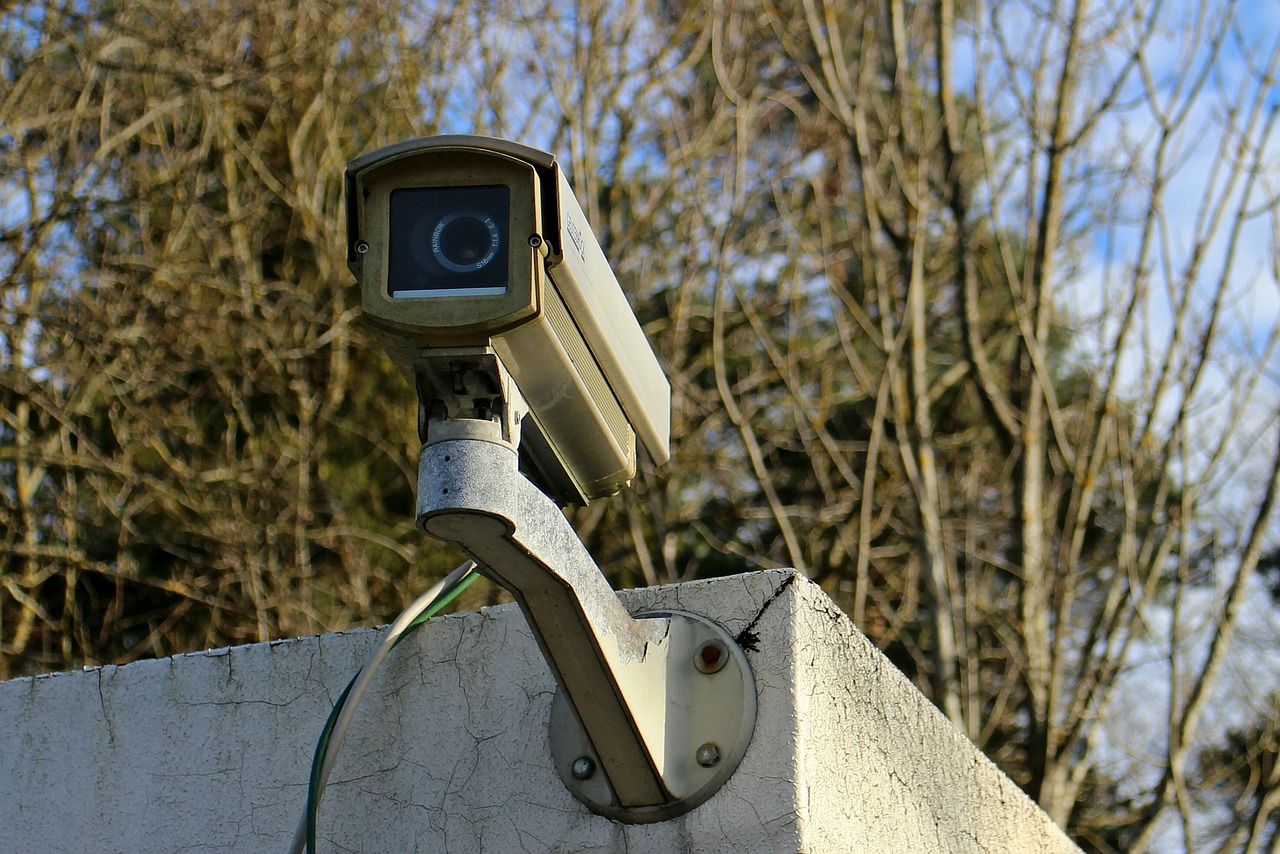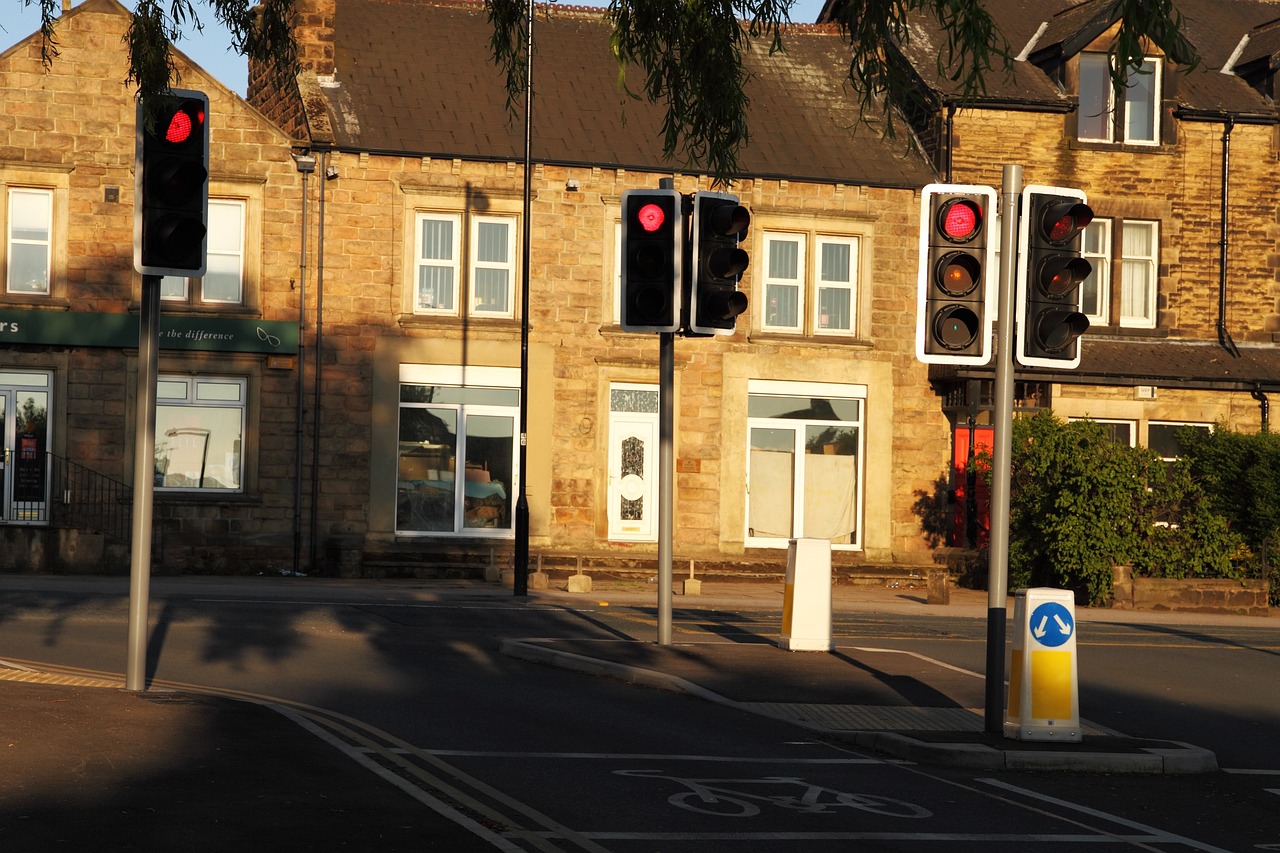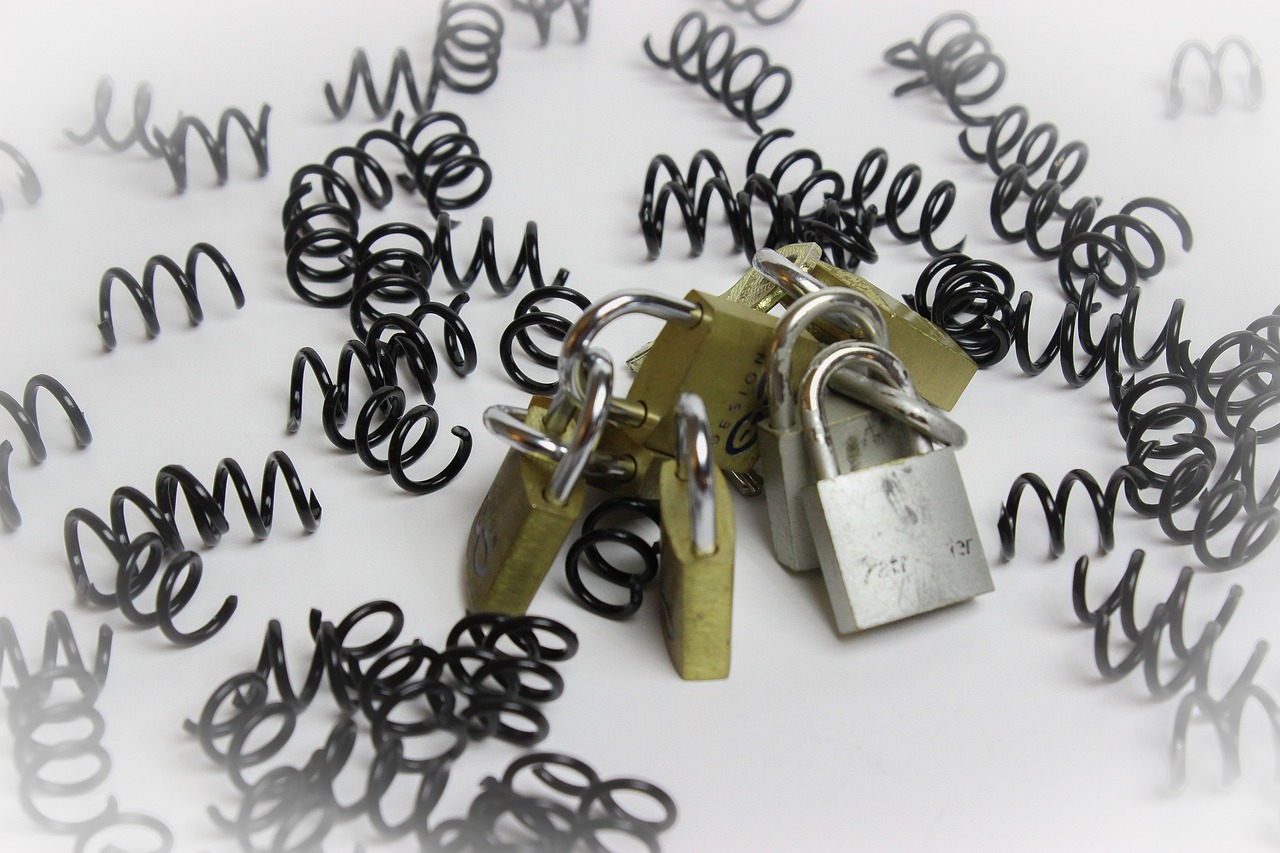How to Stay Safe From Scammers on LinkedIn
In today’s digital landscape, LinkedIn has become a vital platform for networking, job searching, and professional growth. However, with its increasing popularity, it has also attracted a wave of scammers looking to exploit unsuspecting users. So, how can you protect yourself from these nefarious individuals? The answer lies in being informed and proactive. This article will guide you through effective strategies to shield yourself from scammers on LinkedIn, including recognizing red flags, enhancing your profile security, and reporting suspicious activity.
First things first, let’s talk about how to spot a scammer profile. Scammers often use fake identities and can be quite convincing. However, there are several red flags that can help you identify them:
- Profile Pictures: Be wary of profiles with overly polished or generic images. Many scammers use stock photos or images stolen from other users.
- Connections: Check the number of connections. A genuine user typically has a substantial network, while scammers often have very few connections or none at all.
- Activity: Look at their activity on LinkedIn. Scammers usually have little to no engagement with posts or interactions with other users.
By keeping an eye on these indicators, you can significantly reduce the risk of interacting with fraudulent accounts.
Now that you know how to recognize scammers, let’s focus on securing your LinkedIn profile. Strengthening your profile security is crucial in maintaining your online presence. Here are some methods you can implement:
Customizing your privacy settings allows you to control who can view your profile and personal information. To do this, navigate to your settings and adjust the following:
- Profile Visibility: Limit your profile visibility to your connections or specific groups.
- Activity Broadcasts: Turn off notifications about your activity to prevent scammers from tracking your interactions.
By doing this, you can effectively limit your exposure to potential scammers.
Managing your profile's visibility is an essential step in protecting yourself. When you set your profile to be visible only to trusted connections, you create an extra layer of protection against unwanted attention. It’s like having a security fence around your digital life!
Another critical measure is enabling two-factor authentication (2FA) for your account. This feature adds a second layer of security, requiring not just your password but also a verification code sent to your mobile device. It’s like having a double lock on your front door—while a password is helpful, it’s not foolproof. 2FA ensures that even if a scammer gets hold of your password, they still can’t access your account without your phone.
Phishing attempts are another common tactic used by scammers on LinkedIn. These can manifest as deceptive messages or fake job offers. For instance, you might receive a message that seems legitimate but asks for personal information or prompts you to click on a dubious link. Always be skeptical of unsolicited messages, especially if they seem too good to be true. If it walks like a duck and quacks like a duck, it’s probably a scam!
If you encounter suspicious profiles or messages, it’s essential to take action. Reporting these accounts not only protects you but also helps safeguard the LinkedIn community. Here’s how you can report suspicious activity:
LinkedIn provides built-in reporting tools that allow users to flag suspicious content easily. To report a profile, go to the profile page, click on the “More” button, and select “Report.” This action ensures that LinkedIn can take necessary measures against scammers, keeping the platform safer for everyone.
Lastly, don’t underestimate the power of education. Sharing knowledge about scams with your network can significantly contribute to a safer LinkedIn community. If you’ve learned to spot scams, pass that information along! It’s like teaching your friends about the dangers of walking alone at night—you’re not just protecting yourself; you’re looking out for others too.
Q: What should I do if I think I've interacted with a scammer?
A: If you suspect that you’ve interacted with a scammer, report their profile immediately and consider blocking them. Review your account for any unauthorized changes.
Q: How can I tell if a job offer is legitimate?
A: Look for signs of professionalism in the job offer, such as a company email address and detailed job descriptions. If something feels off, trust your instincts and investigate further.
Q: Is it safe to connect with people I don't know on LinkedIn?
A: While networking is essential, be cautious about connecting with individuals you don’t know. Always check their profiles for red flags before accepting connection requests.

Recognizing Scammer Profiles
When it comes to navigating the vast world of LinkedIn, being able to spot a scammer is crucial for your online safety. Scammers often create profiles that mimic legitimate users, but there are distinct signs that can help you identify them. First and foremost, take a close look at the profile picture. If it seems overly polished or too good to be true, it might just be a stock photo. Scammers often use images that are not their own, so a quick reverse image search can reveal if the picture has been lifted from elsewhere on the internet.
Next, examine their connections. A genuine LinkedIn profile typically has a network of connections that reflects their industry and professional background. If you see a profile with hundreds of connections but no mutual contacts or relevant industry ties, that’s a red flag. Additionally, consider the activity on their profile. Scammers may have little to no engagement or posts, making their profiles appear stagnant. If they are sending you messages but lack any meaningful contributions to discussions or groups, it’s time to be cautious.
Another effective way to recognize a scammer is by analyzing their headline and summary. Scammers often use vague or overly generic descriptions that don’t provide specific information about their skills or experiences. For instance, if someone claims to be a “business consultant” without any details on what they consult about or who their clients are, it’s worth questioning their legitimacy. In contrast, a legitimate user will provide clear, detailed information about their professional journey.
Furthermore, you might want to check for any inconsistencies in their profile. For example, if their education or work history doesn’t align with the skills they claim to possess, that’s a strong indication that something is off. Scammers often fabricate their backgrounds, so look for specific dates, institutions, and job titles. If they can’t provide details or their timeline seems sketchy, it’s best to proceed with caution.
In summary, recognizing scammer profiles on LinkedIn involves a combination of vigilance and critical thinking. By paying attention to profile pictures, connections, activity, headlines, and inconsistencies, you can significantly reduce your chances of falling victim to scams. Remember, when in doubt, it’s always better to be safe than sorry. Trust your instincts and don’t hesitate to investigate further if something feels off.
- What should I do if I suspect a profile is a scammer? If you suspect a profile is fraudulent, you should report it to LinkedIn immediately using their reporting tools.
- Can I block a scammer on LinkedIn? Yes, you can block any user on LinkedIn to prevent them from contacting you or viewing your profile.
- How can I protect my own profile from being copied by scammers? Regularly update your privacy settings and be cautious about sharing personal information that could be misused.

Strengthening Your Profile Security
In today's digital age, protecting your online presence has never been more crucial, especially on platforms like LinkedIn where professional networking thrives. To safeguard yourself from potential scammers, it’s essential to take proactive steps to enhance your profile security. This not only protects your personal information but also fortifies your professional reputation. So, how can you achieve this? Let’s dive into some practical methods that can significantly reduce the risk of unauthorized access to your LinkedIn account.
First and foremost, customizing your privacy settings is a game-changer. By adjusting these settings, you can control who gets to see your profile and personal information. LinkedIn offers various options that allow you to limit your visibility. For instance, you can choose to make your profile visible only to your connections or even hide it from search engines. This way, you can significantly limit exposure to potential scammers who might be lurking around. To adjust your privacy settings, follow these steps:
- Navigate to your profile and click on the “Me” icon at the top of your LinkedIn homepage.
- Select “Settings & Privacy” from the dropdown menu.
- In the “Visibility” section, customize who can see your connections, profile, and activity.
Managing your profile visibility is another crucial aspect of strengthening your security. By ensuring that only trusted connections can view your information, you add an extra layer of protection against unwanted attention. This means regularly reviewing your connections and removing those who seem suspicious or untrustworthy. Think of your LinkedIn profile as a digital storefront; you wouldn’t want just anyone peeking in, right? Keep your network tight and relevant.
Another vital step in securing your LinkedIn profile is enabling two-factor authentication (2FA). This feature adds a critical second layer of protection against unauthorized logins. Essentially, even if a scammer manages to get hold of your password, they won't be able to access your account without the second piece of information that only you possess. To enable 2FA, go to the “Settings & Privacy” section, find the “Security” tab, and follow the prompts to set it up. It’s a small step that can make a huge difference in keeping your account safe.
In conclusion, while the internet can be a wild west of scams and fraud, taking these proactive measures can significantly enhance your profile security on LinkedIn. By adjusting your privacy settings, controlling your profile visibility, and using two-factor authentication, you create a formidable barrier against potential threats. Remember, your online safety is in your hands!
Q: What should I do if I suspect my LinkedIn account has been hacked?
A: If you suspect your account has been compromised, immediately change your password and enable two-factor authentication. Check your recent activity for any unauthorized changes and report the issue to LinkedIn support.
Q: How can I tell if a connection request is from a scammer?
A: Look for red flags such as incomplete profiles, generic messages, or profiles with few connections. If something feels off, it’s best to decline the request.
Q: Is it safe to share my email or phone number on LinkedIn?
A: It’s advisable to be cautious about sharing personal information. Adjust your privacy settings to control who can see your contact details and consider using LinkedIn’s messaging system for communication instead.

Adjusting Privacy Settings
When it comes to safeguarding your LinkedIn profile, adjusting your privacy settings is a crucial step that can help you maintain control over who sees your personal information. Think of your profile as a window into your professional life; you wouldn’t want just anyone peering in, right? By customizing these settings, you can significantly reduce the risk of falling victim to scammers who are lurking in the shadows of the platform.
First and foremost, take a moment to review your profile’s visibility settings. LinkedIn gives you the option to choose who can see your profile. You can opt for a more restricted view, allowing only your connections to see your details, or go public, which opens the floodgates to anyone on the internet. It’s wise to keep your profile private, especially if you’re just starting out or if you have a lot of sensitive information listed.
To adjust these settings, navigate to the Privacy & Settings section of your LinkedIn profile. Here, you’ll find various options to tailor your privacy preferences. For instance, you can choose to hide your profile photo from non-connections or limit the visibility of your activity feed. This means that only your connections will be able to see your posts and updates, which can significantly reduce unwanted attention from potential scammers.
Another important feature to consider is the setting that controls who can send you connection requests. By restricting this to only people who know your email address or are in your network, you can minimize the chances of receiving requests from dubious accounts. Remember, not all connections are created equal; some may have ulterior motives.
Moreover, you should also take advantage of the option to manage your profile viewing options. This allows you to browse other profiles anonymously, which can be a handy tool if you’re researching potential employers or connections without exposing your identity. However, keep in mind that if you choose to view profiles anonymously, you won’t be able to see who views your profile either.
Lastly, consider reviewing the settings for your contact information. Make sure that only trusted connections have access to your email and phone number. This way, you can avoid unsolicited messages and potential scams that might come your way. Remember, while LinkedIn is a fantastic platform for networking, it’s essential to keep your guard up and protect your personal information.
In summary, adjusting your privacy settings on LinkedIn is not just about keeping your information safe; it’s about taking control of your professional narrative. By being proactive and strategic about who can see your profile, you can create a safer environment for yourself and ensure that your networking experience is both rewarding and secure.
- How do I change my privacy settings on LinkedIn?
To change your privacy settings, go to your profile, click on the "Me" icon at the top, select "Settings & Privacy," and then navigate to the "Privacy" tab where you can adjust various settings.
- Can I make my LinkedIn profile completely private?
While you cannot make your profile completely invisible, you can limit visibility to only your connections or specific individuals.
- What happens if I set my profile to private?
If you set your profile to private, only your connections will be able to see your information, which helps protect you from unwanted attention.

Controlling Profile Visibility
When it comes to staying safe on LinkedIn, controlling your profile visibility is an essential step that many users overlook. Imagine your LinkedIn profile as a shop window; if it's too open, anyone can peek in, and you might not want just anyone to see what’s on display. By carefully adjusting your visibility settings, you can ensure that only trusted connections have access to your personal information.
First and foremost, you should know that LinkedIn provides you with the tools to customize who can see your profile. This means you can decide whether your profile is visible to everyone on LinkedIn, only your connections, or even just your network. To do this, navigate to the Privacy & Settings section of your account. Here, you can make choices that suit your comfort level. For instance, setting your profile to be visible only to your connections can significantly reduce unwanted attention from scammers.
Moreover, consider the impact of your profile picture and headline. A professional image and a clear headline can help establish credibility, but they can also attract the wrong kind of attention if your profile is too visible. You might want to limit your headline visibility to connections only, ensuring that only those you trust can see the details that might make you a target.
Another important aspect to consider is your activity feed. By default, your activity may be visible to all your connections. However, if you're applying for jobs or networking, you might prefer to keep your activity private. Adjusting these settings not only protects your job search but also limits the information that potential scammers can gather about you.
To summarize, controlling your profile visibility is like putting up a security fence around your digital presence. By managing who can see your information, you create a safer environment for yourself. Here are a few key points to remember:
- Regularly review your privacy settings.
- Limit visibility to only your connections when possible.
- Be mindful of what you share in your activity feed.
By taking these steps, you are not just protecting yourself; you are also contributing to a safer LinkedIn community. After all, the more aware we are of our online presence, the less likely we are to fall victim to those who wish to exploit it.
Q: How can I adjust my LinkedIn profile visibility settings?
A: To adjust your profile visibility settings, go to the Privacy & Settings section of your LinkedIn account. From there, you can choose who can see your profile and activity.
Q: What should I do if I notice suspicious activity on my profile?
A: If you notice any suspicious activity, it's important to report it immediately using LinkedIn's reporting tools. This helps protect not only you but also other users on the platform.
Q: Can I hide my profile from search engines?
A: Yes, you can adjust your settings to prevent your LinkedIn profile from appearing in search engine results. This adds an extra layer of privacy.
Q: Is it safe to connect with people I don’t know on LinkedIn?
A: While networking is a key part of LinkedIn, it's important to be cautious. Always review a person's profile and mutual connections before accepting a connection request.

Using Two-Factor Authentication
When it comes to securing your LinkedIn account, two-factor authentication (2FA) is like having a double lock on your front door. It's that extra layer of protection that can make all the difference between a secure account and one that’s easily compromised. So, what exactly is 2FA? In simple terms, it requires not just your password but also a second piece of information to verify your identity. This means that even if a scammer manages to steal your password, they won't be able to access your account without that second factor.
Enabling two-factor authentication is a straightforward process, and it can significantly reduce the risk of unauthorized access. Here’s how it generally works:
- After entering your password, you will receive a code via text message or an authentication app.
- You need to enter this code to gain access to your account.
This simple step can deter most scammers because they would need not only your password but also access to your phone or authentication app. It's like adding a security guard to your online presence, ensuring that only you can gain entry. To set up 2FA on LinkedIn, follow these steps:
- Log in to your LinkedIn account and go to the Settings & Privacy section.
- Under the Account tab, find the Two-step verification option.
- Follow the prompts to enable 2FA and choose how you want to receive your verification codes.
Once you've activated two-factor authentication, it's crucial to keep your phone or authentication app secure. This means avoiding sharing your device with others and being cautious about where you enter your personal information. Remember, the goal is to create a fortress around your LinkedIn profile, making it as difficult as possible for scammers to breach your defenses.
In conclusion, using two-factor authentication is a vital step in protecting your LinkedIn account. It not only enhances your security but also gives you peace of mind knowing that you’ve taken proactive measures against potential threats. So, don't wait for a scammer to make the first move—arm yourself with 2FA and keep your professional connections safe!
Q: What is two-factor authentication?
A: Two-factor authentication (2FA) is a security process that requires two different forms of identification to access an account, enhancing security beyond just a password.
Q: How do I set up two-factor authentication on LinkedIn?
A: You can set up 2FA by logging into your LinkedIn account, navigating to the Settings & Privacy section, and following the prompts to enable two-step verification.
Q: What should I do if I lose access to my two-factor authentication method?
A: If you lose access to your device or authentication app, you can use LinkedIn's recovery options, which may include answering security questions or using backup codes provided during the setup process.
Q: Can I disable two-factor authentication later?
A: Yes, you can disable two-factor authentication anytime through the same Settings & Privacy section where you enabled it, but it's not recommended for your security.

Recognizing Phishing Attempts
In the vast sea of LinkedIn connections and opportunities, it's easy to get swept away by enticing messages and seemingly legitimate job offers. However, lurking beneath the surface are scammers employing phishing tactics designed to trick you into divulging sensitive information. Recognizing these attempts is crucial for protecting your personal and professional data. So, how do you spot a phishing attempt?
First off, be on the lookout for deceptive messages. Scammers often craft messages that appear to come from reputable sources or even from people you know. For instance, you might receive a message that claims to be from a recruiter offering you a dream job, but when you look closer, the sender's profile might exhibit red flags. These can include:
- Generic Greetings: Messages that start with "Dear User" instead of your name can be a sign of a phishing attempt.
- Poor Grammar and Spelling: Many scammers are not native English speakers, so if the message is riddled with errors, proceed with caution.
- Urgency: If the message pressures you to act quickly, it's a tactic to cloud your judgment.
Another common tactic is the use of fake job offers. These offers often promise high salaries for minimal work, which is a major red flag. If it sounds too good to be true, it probably is! Scammers may ask you to provide personal information, such as your Social Security number or bank details, under the guise of needing it for a background check. Always remember, legitimate employers will never ask for sensitive information upfront.
Moreover, be wary of links and attachments in messages. Phishing attempts often include links that lead to fake websites designed to steal your login credentials. Hover over any links before clicking to see where they actually lead. If the URL looks suspicious or doesn’t match the company’s official website, don’t click it! Instead, visit the company's website directly through your browser.
Lastly, trust your instincts. If something feels off about a message or connection request, it’s better to err on the side of caution. You can always verify the legitimacy of a message by reaching out to the person through a different platform or checking their activity on LinkedIn. Remember, staying informed and vigilant is your best defense against phishing attempts.
Q: What should I do if I suspect a phishing attempt?
A: If you suspect a phishing attempt, do not engage with the sender. Report the message to LinkedIn and block the user to prevent further contact.
Q: Can I recover my account if I fall victim to a phishing scam?
A: If you believe you have fallen victim to a phishing scam, immediately change your password and enable two-factor authentication. Contact LinkedIn support for further assistance.
Q: How can I educate my network about phishing attempts?
A: Share your experiences and knowledge about phishing scams through posts or direct messages. Encouraging discussions on security can help raise awareness among your connections.

Reporting Suspicious Activity
In the vast world of LinkedIn, where professionals connect and opportunities abound, it’s crucial to maintain a safe environment. Unfortunately, scammers lurk in the shadows, ready to exploit unsuspecting users. If you encounter suspicious profiles or messages, it’s essential to take action—not just for your safety, but for the safety of the entire LinkedIn community. Reporting suspicious activity can significantly diminish the chances of others falling victim to these deceitful tactics.
First and foremost, recognizing what constitutes suspicious activity is vital. This can include:
- Profiles with incomplete information or generic photos.
- Messages that contain unsolicited job offers or requests for personal information.
- Connections from individuals who have no mutual contacts or a suspiciously low number of connections.
Once you’ve identified these red flags, it’s time to leverage LinkedIn's reporting tools. To report a profile or message, navigate to the specific profile or message thread and look for the “More” option, usually represented by three dots. From there, select “Report” and follow the prompts to provide details about why you believe the profile or message is suspicious. This process is straightforward, and your input helps LinkedIn take necessary actions against scammers.
Moreover, it’s essential to understand that reporting is not just about removing a threat; it’s about contributing to a safer online environment. Each report helps the platform refine its algorithms and improve its security measures. As you report suspicious activity, consider sharing your experiences with your network. Educating others about potential scams can empower them to recognize and report similar threats, creating a ripple effect that enhances overall safety.
LinkedIn has designed its reporting tools to be user-friendly and efficient. When you report a suspicious profile, you’ll typically be asked to select a reason for your report. This may include options such as:
- Impersonation
- Spam
- Inappropriate content
Once you submit your report, LinkedIn will review it and take appropriate action, which may include removing the profile or blocking the user. It’s worth noting that while you may not receive direct feedback on every report, your contributions are invaluable in helping maintain the integrity of the platform.
Lastly, consider how you can play a proactive role in educating your network about the importance of reporting suspicious activity. Share tips and experiences, and encourage your connections to be vigilant. You might even consider hosting a small virtual meeting or writing a post to discuss common scams and reporting procedures. The more informed your network is, the less likely they are to fall prey to scammers. Remember, knowledge is power, and together, we can build a safer LinkedIn community.
| Question | Answer |
|---|---|
| How do I know if a profile is fake? | Look for incomplete profiles, generic photos, and a lack of connections or mutual contacts. |
| What should I do if I receive a suspicious message? | Do not engage with the sender and report the message through LinkedIn's reporting tools. |
| Can I report multiple profiles? | Yes, you can report as many profiles as you encounter that seem suspicious. |
| Will I be informed about the outcome of my report? | LinkedIn does not provide feedback on every report, but they do take action based on user reports. |

Using LinkedIn's Reporting Tools
When it comes to keeping your LinkedIn experience safe and secure, one of the most powerful tools at your disposal is the platform's built-in reporting system. Understanding how to effectively utilize these tools can make a significant difference in combating scams and fraudulent activities. So, what exactly can you report on LinkedIn? Well, it ranges from suspicious profiles to unwanted messages that seem fishy. Each report you file is a step toward maintaining a safer community for everyone.
To get started, navigate to the profile or message that raises your suspicions. LinkedIn makes it quite straightforward. Look for the three dots (or 'More' option) usually found near the top right corner of the profile or message. This is your gateway to reporting. Once you click on it, you’ll see options like 'Report' or 'Block.' It’s essential to choose the right reason for your report, as this helps LinkedIn take appropriate action. The reasons can include:
- Fake Profile
- Spam or Scams
- Inappropriate Content
- Impersonation
By categorizing your report accurately, you not only help yourself but also assist LinkedIn in understanding the type of threats users are facing. After filing a report, you may wonder what happens next. LinkedIn reviews every report submitted, and while they may not provide detailed feedback on individual cases, rest assured that your actions contribute to a broader effort to keep the platform secure.
Moreover, if you encounter a message that seems too good to be true, such as job offers that promise unrealistic salaries or require personal information, don’t hesitate to report it. Remember, scammers often disguise themselves as recruiters or professionals to gain your trust. By using LinkedIn’s reporting tools, you can help prevent others from falling into the same trap, creating a ripple effect of awareness and caution throughout your network.
In addition, it’s vital to educate yourself and your connections about the importance of reporting suspicious activity. You might be surprised to learn that many users are unaware of these tools or how to use them. Sharing this knowledge can empower others to take action, fostering a community where everyone feels safe and secure. So, take a moment to spread the word! Whether it’s through a quick message or a post, your efforts can help create a more vigilant LinkedIn environment.
In conclusion, LinkedIn's reporting tools are not just features; they are essential components in the fight against online scams. By actively engaging with these tools, you contribute to a safer networking experience for yourself and your connections. Remember, every report counts, and together we can make LinkedIn a more secure platform for professional growth and opportunities.
Q: How do I report a suspicious message on LinkedIn?
A: To report a suspicious message, click on the three dots in the top right corner of the message and select 'Report.' Follow the prompts to categorize your report.
Q: What happens after I report a profile?
A: LinkedIn reviews all reports and takes appropriate action based on their findings. While you may not receive specific feedback, your report helps improve the platform's safety.
Q: Can I report multiple profiles or messages at once?
A: Unfortunately, LinkedIn does not allow bulk reporting. You will need to report each suspicious profile or message individually.
Q: Is it safe to connect with someone I suspect might be a scammer?
A: If you suspect someone is a scammer, it's best to avoid connecting with them. Instead, report their profile and block them to prevent further contact.

Educating Your Network
In today's digital age, knowledge is power, especially when it comes to navigating the murky waters of social media platforms like LinkedIn. One of the most effective ways to protect yourself and others from scams is by actively . Think of it as building a fortress; the more people you have on guard, the safer you all are. Start conversations with your connections about the common signs of scams, and share your experiences. This can be as simple as sending a quick message or posting a status update that raises awareness.
Consider hosting a virtual meeting or a webinar where you can dive deeper into the topic. You could cover various types of scams, such as phishing attempts or fake job offers, and provide tips on how to spot them. An interactive session allows for questions and discussions, making the learning process engaging and effective. Remember, the goal is to create a culture of vigilance within your network.
To facilitate this, you might want to share some key points that can help others recognize scams. Here are a few suggestions:
- Spot the Red Flags: Encourage your connections to look for inconsistencies in profiles, like a lack of connections or a generic profile picture.
- Verify Job Offers: Remind them to research companies and verify job offers through official channels.
- Report Suspicious Activity: Make sure they know how to report any suspicious messages or profiles to LinkedIn.
Also, consider creating a simple infographic or a checklist that outlines these points. Visual aids can be incredibly effective in conveying information quickly and clearly. You can share it through your LinkedIn feed or even in private messages to your connections.
Finally, remember that education is an ongoing process. Regularly update your network about new scams or tactics that scammers may be using. By fostering an environment of open communication and awareness, you not only protect yourself but also contribute to a safer LinkedIn community for everyone. So, don’t be shy—start the conversation today!
Q: How can I tell if a LinkedIn message is a scam?
A: Look for generic greetings, poor grammar, or offers that seem too good to be true. If something feels off, trust your instincts.
Q: What should I do if I encounter a suspicious profile?
A: Report the profile using LinkedIn's reporting tools. This helps keep the platform safe for everyone.
Q: Can I educate my connections about scams without being overly dramatic?
A: Absolutely! Approach the topic with a focus on shared experiences and helpful information rather than fear-mongering.
Frequently Asked Questions
- How can I identify a scammer profile on LinkedIn?
Identifying a scammer profile can be tricky, but there are telltale signs. Look for profiles with incomplete information, such as missing job history or vague descriptions. Check their connections; if they have few connections or are connected only to other suspicious profiles, that’s a red flag. Also, be wary of profile pictures that seem overly polished or generic, as scammers often use stock images.
- What steps can I take to enhance my LinkedIn profile security?
To enhance your LinkedIn profile security, start by adjusting your privacy settings. This allows you to control who can see your profile and personal information. Additionally, enable two-factor authentication for an extra layer of security. This means that even if someone gets hold of your password, they won't be able to access your account without a second verification step.
- What are common phishing attempts I should watch out for?
Scammers often use deceptive messages that appear to be from legitimate sources. Common tactics include fake job offers that require personal information or requests to connect with you under false pretenses. Always be cautious of messages that urge you to click on links or provide sensitive information.
- How do I report suspicious activity on LinkedIn?
To report suspicious profiles or messages, use LinkedIn's built-in reporting tools. Simply go to the profile or message in question and look for the report option. This action not only helps protect you but also contributes to the safety of the LinkedIn community by alerting the platform to potential scams.
- Why is it important to educate my network about scams?
Educating your network about scams is crucial because knowledge is power! By sharing information about common scams and how to recognize them, you help create a safer environment for everyone. When your connections are informed, they can also help spread awareness, reducing the chances of others falling victim to scams.



















